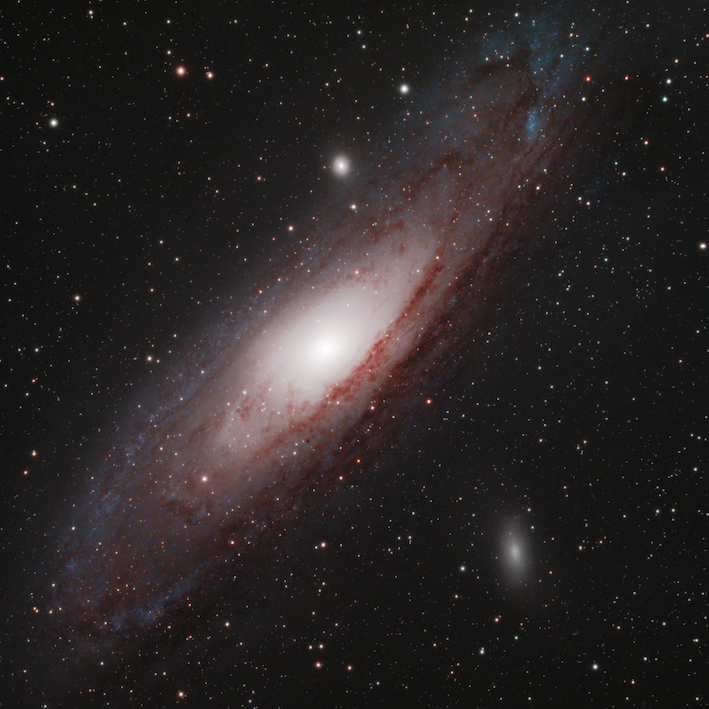We could not wait to test our new telescope! We set it up in our backyard. Unfortunately, a streetlight directly shines in, and our narrow-band filter has not arrived yet. But we have so much to learn so we started our first practicing session on the night of 6/7 November 2020. The first shock was that the guide scope was totally out of focus and we actually thought that the guide camera didn’t work. Then we spent some time with polar alignment. Surprisingly, it all went very well and much faster than we thought with the ASIair. We could not do this with the built-in iPolar of the CEM40, because it requires a Windows laptop which we don’t have (oh my, the 20th century has passed a long time ago!!!). Getting the main scope in focus was also trivial using the Bahtinov mask – once we got familiar with the one-star alignment technique and plate solving with ASIair. Funny enough, most of our problems initially were how to get a bright star, like Vega in the field of view, and how to make it visible with short integrations when the mask is on. The trick is of course plate solving and slew to the star again, which will be now in the center, and then push the camera gain high up.
Shooting Andromeda
To our surprise, following just two hours of trying to find out how things work, we were ready to take our first broadband images. The field of view is very limited from our garden, but Andromeda was getting high near the zenith. Excellent opportunity to compare our telescope to what we could achieve with just a camera and a telephoto lens during the summer. We initiated the sequence of taking 38 times 5-minute pictures and, and moved to the comfort of our house. The integrated image speaks for itself. It didn’t require a lot of processing actually, and the colors came out rather naturally as well. Some stretching was of course done and the hot pixels were removed. But we did not even apply any bias, dark, flat frame calibration to the individual subs. The ZWO ASI533MC-P has very low readout noise and has no amp-glow, and operating at -20 C temperature it produces amazing, almost noise-free pictures. Of course, we had some issues with the equipment: finding the correct back focus and flattener distance adjustment, balancing, ASIair freezing during telescope settling phase after dithering, short-reach with ASIair wifi, the short lifetime of the battery – these are worth summarizing in a separate post for the curious. But for now just let’s enjoy the image of the great M31, Andromeda galaxy!
Technical data
M31, 38x300s
Friday, 6/7 Nov. 2020
William Optics GT81, f/5.9
Flattener 6AIII 0.8x
ZWO ASI533MC-P, gain 101, -20 deg.
WO Uniguide 50/200 with ASI120MMmini
iOptron CEM40
Optolong L-pro
ASIair
Bortle~6
Moon 71%
ASTAP & Photoshop
